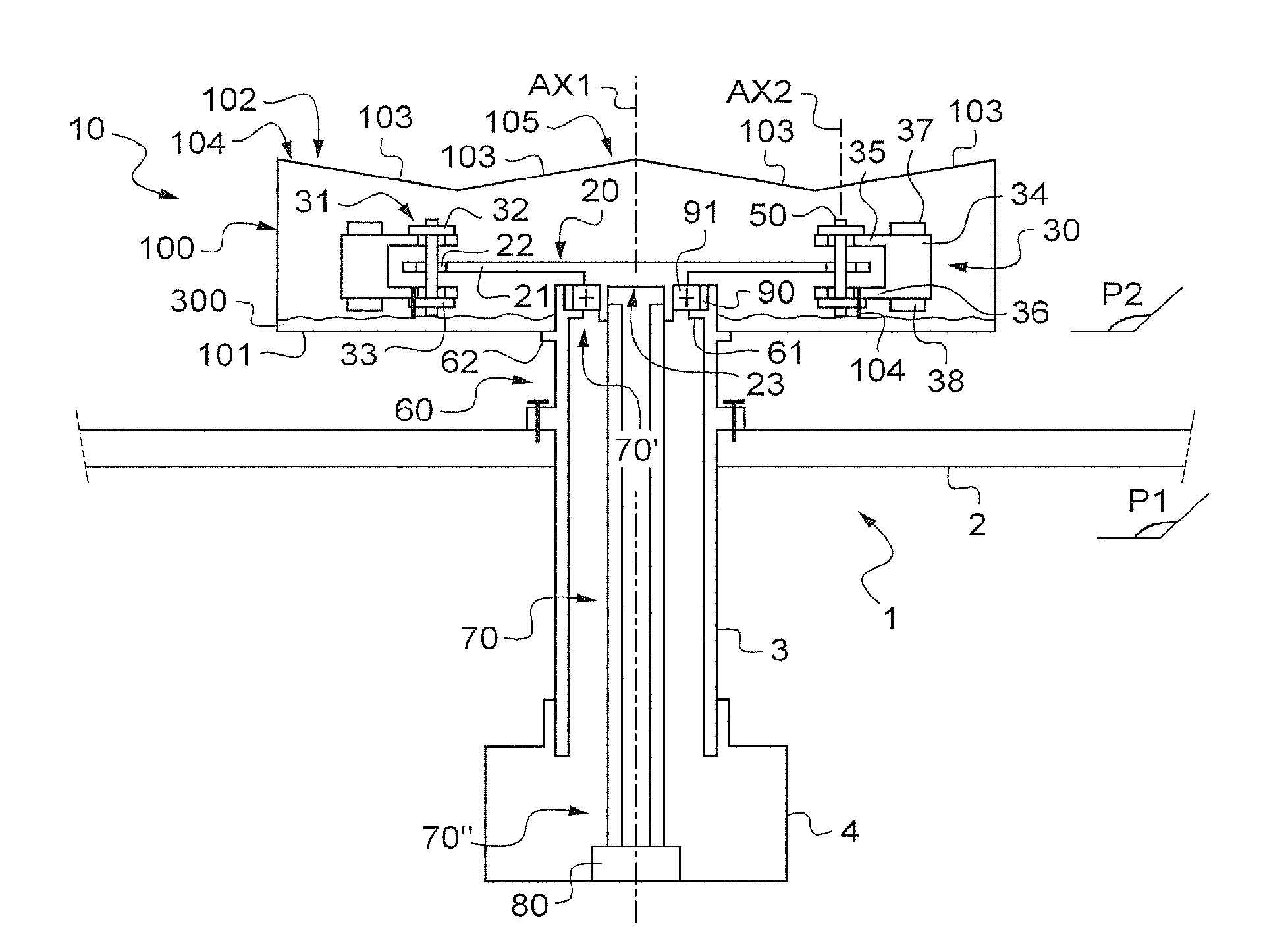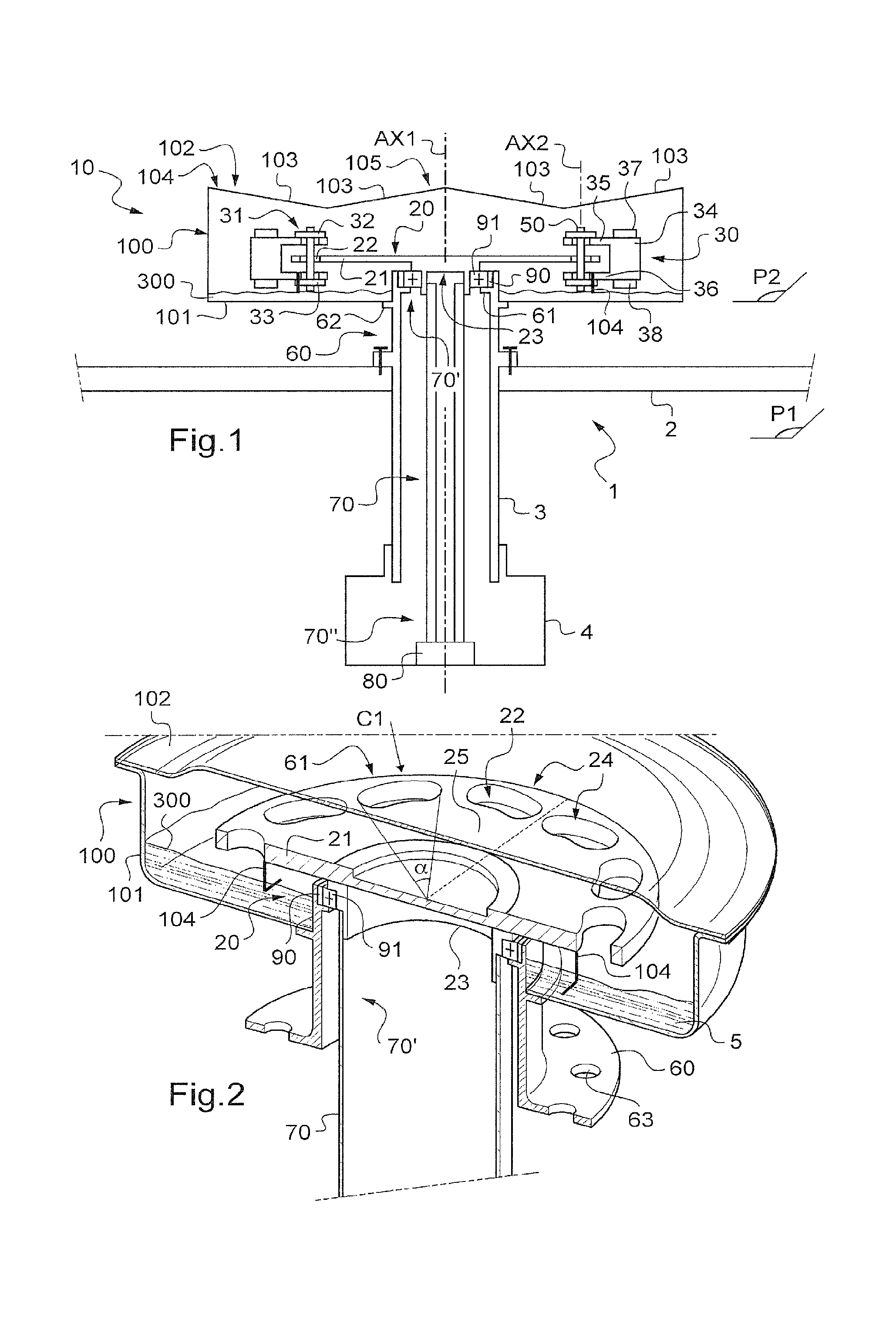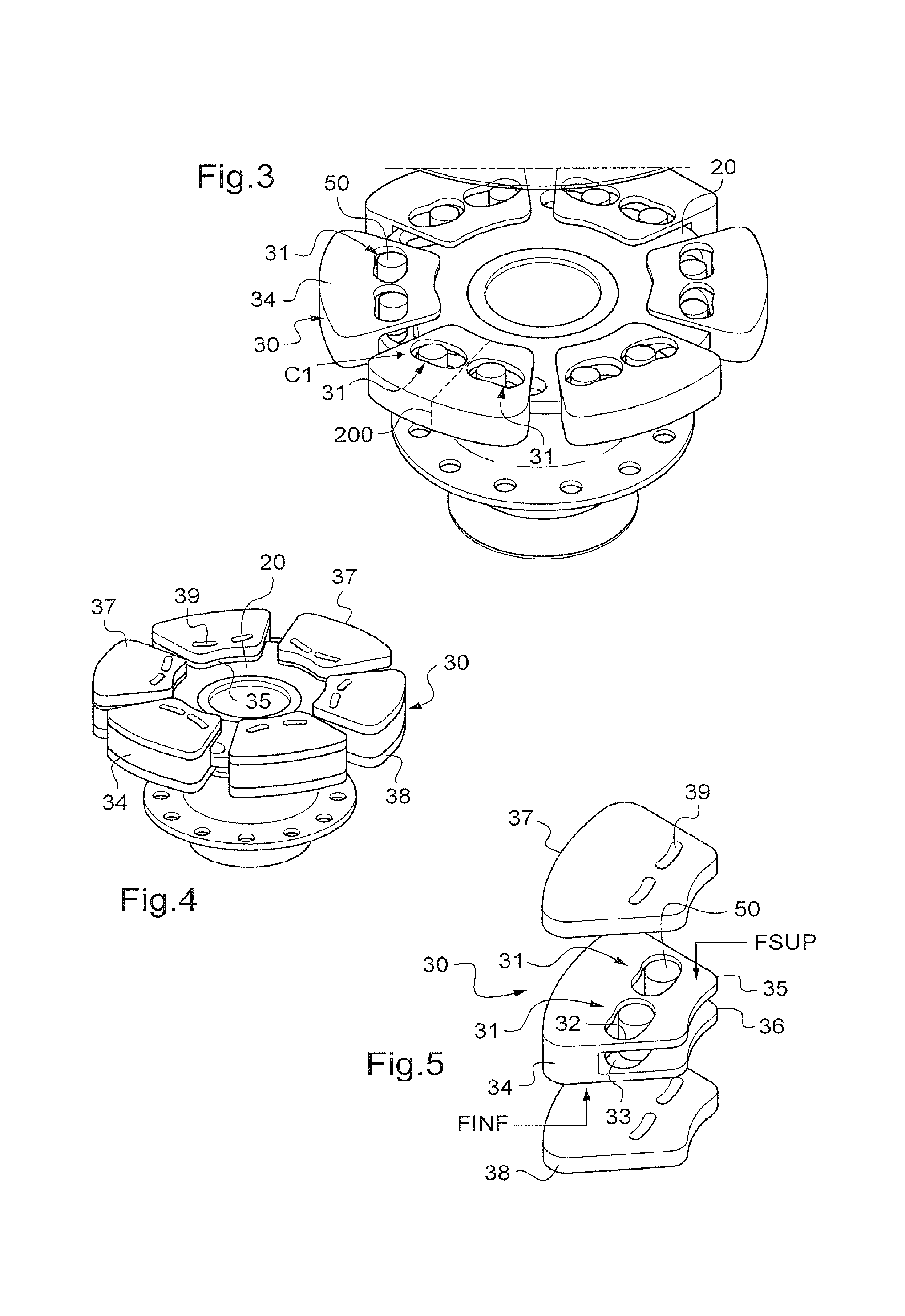Device for reducing vibration generated by rotorcraft rotor, and rotorcraft provided with such device
a technology of reducing vibration and rotorcraft, which is applied in the direction of propellers, propulsive elements, water-acting propulsive elements, etc., can solve the problems of not being able to adapt to frequencies, particularly perceptible vibration, and heavy devices of the first type, so as to reduce vibration, reduce vibration, and not require time-consuming maintenance actions
- Summary
- Abstract
- Description
- Claims
- Application Information
AI Technical Summary
Benefits of technology
Problems solved by technology
Method used
Image
Examples
Embodiment Construction
[0084]Elements shown in more than one figure are given the same references in each of them.
[0085]FIG. 1 is a diagrammatic section of a device 10 for reducing the vibration of a main rotor 1 of a rotorcraft.
[0086]The main rotor 1 comprises a hub 2 extending in a first plane P1 to carry blades (not shown). In order for the blades to generate lift, the hub 2 is set into rotation by a terminal first stage of a power gearbox 4 via a rotor mast 3, the rotor mast being constrained to rotate about the axis of rotation AX1 with the hub 2 and with the terminal first stage of the power gearbox 4.
[0087]The movements of the blades while rotating about the axis of rotation AX1 cause vibration to be created that can be felt in the airframe of a rotorcraft by the occupants of the rotorcraft.
[0088]Consequently, the rotorcraft includes a device 10 suitable for reducing the vibration, the device 10 being a pendular resonator.
[0089]The device 10 has heavy elements 30 arranged on a support 20, and more ...
PUM
 Login to View More
Login to View More Abstract
Description
Claims
Application Information
 Login to View More
Login to View More - R&D
- Intellectual Property
- Life Sciences
- Materials
- Tech Scout
- Unparalleled Data Quality
- Higher Quality Content
- 60% Fewer Hallucinations
Browse by: Latest US Patents, China's latest patents, Technical Efficacy Thesaurus, Application Domain, Technology Topic, Popular Technical Reports.
© 2025 PatSnap. All rights reserved.Legal|Privacy policy|Modern Slavery Act Transparency Statement|Sitemap|About US| Contact US: help@patsnap.com



